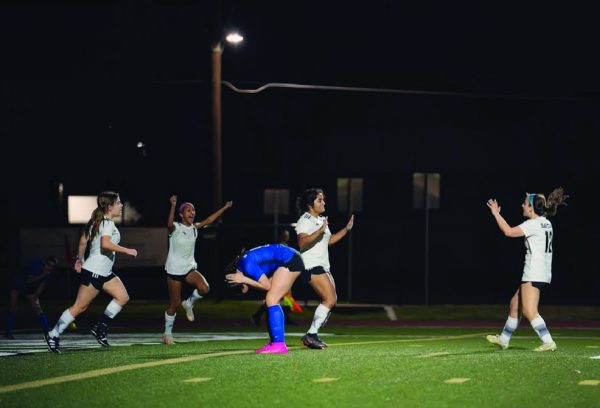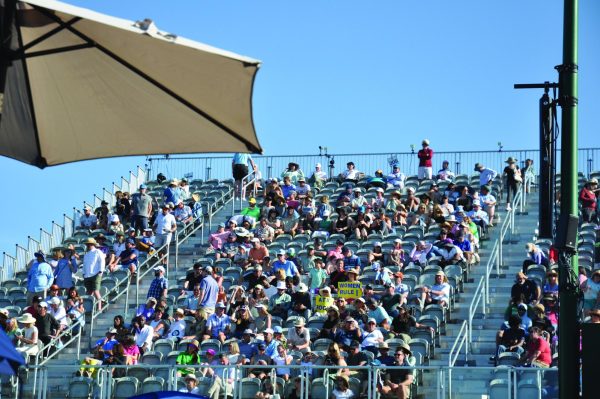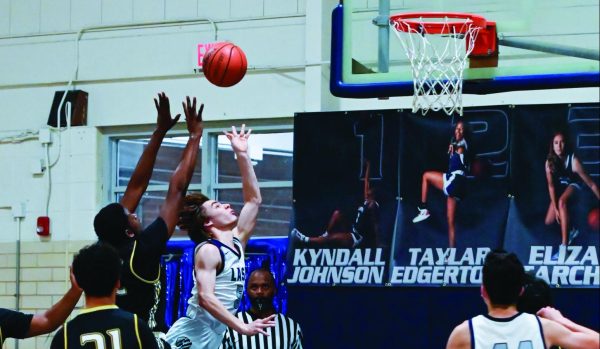Waging War on Weight Watching: The Mental and Physical Effects of Wrestling
March 28, 2022
Wrestling can be a hard subject to discuss due to the constant monitoring of weight, something that can lead to unhealthy eating habits and sometimes even eating disorders. Bulking and cutting is a concept often involved with wrestling that incorporates gaining muscle mass and then later losing fat mass while still retaining that previously gained muscle mass. This tactic can give a competitive advantage on the mat, but sometimes, the advantage can be outweighed by malnutrition.
According to LASA athletic trainer and director Sue Torres, bulking and cutting can potentially result in athletes having eating disorders. Torres believes that this should be used with caution, especially when it comes to younger athletes.
“They’re restricting water. They’re trying to eat very little, not eating enough calories,” Torres said. “You know, they’re doing that on purpose, and it’s usually short bouts of it. That’s disordered eating. Then, eating disorders [are] the next level.”
Wrestling coach Neno December strongly believes that bulking and cutting is an unnecessary measure taken in wrestling. Students have to keep a consistent weight in order to compete due to the Austin Independent School District’s (AISD) rules around wrestling which prevents athletes from gaining or losing too much weight. But according to December, the constant monitoring of weight throughout the day is unhealthy.
“I’m against cutting weight,” December said. “Because whatever weight class you are in, you are expected to either stay in that weight class throughout the entire season. How much you gain and how much you lose is recorded on a weekly basis, and so I feel like that kind of acts as a countermeasure towards feeding into your eating disorder. Especially if you try to dehydrate yourself to go down to a certain weight class.”
Torres says that dehydrating is a common method used to lose weight, but often comes with consequences. As a result, Torres believes that athletes should avoid using dehydration as a method of cutting.
“We don’t want them to dehydrate themselves for the purpose of [losing] weight,” Torres said. “It just comes right back when you drink something. While you’re dehydrated, you’re putting yourself at risk.”
According to December, AISD regulations emphasize bulking and cutting. He said that AISD’s strict policies regarding weight groups make it more likely for bulking and cutting to be misused.
“There is a plan in place where [AISD] checks what your minimum weight is and you can only go down so far,” December said. “You can’t just lose ten pounds two days before the meet. That just automatically disqualifies you. So you are allotted to lose about two pounds every week. And that is something that gets recorded and used. And if there are any anomalies, you can’t participate in the meet. Or even if you do participate in a meet, ultimately, the coach would get in trouble.”
Although bulking and cutting comes with drawbacks, Torres said that if done correctly, it can provide an advantage when wrestling. Torres said that younger athletes, as they are less disciplined, often struggle with maintaining their weight according to this principle.
“The problem with high school wrestlers is they’re not the most disciplined,” Torres said. “When Thanksgiving hits, [they] gain 15 pounds. Now [they] need to get back down to [their] weight class. And also over Christmas break. Those are right smack in the middle of wrestling, which is hard. So what you might have is kids trying to cut weight to get back to their weight class. Not so much to give them a competitive advantage, but to get down to where they’re supposed to be. Wrestling takes a tremendous amount of self-discipline.”








